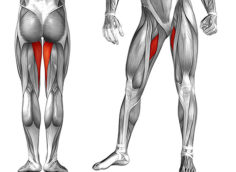When it comes to barbell exercises, the overhead press is tough to beat. Unfortunately many lifters struggle to keep their core engaged, often leading to excessive lumbar extension. Besides minimizing tension to the targeted musculature, this also places undue strain on the low back and spine, leading to potential injuries down the road.
Although there are a number of cues and drills that can be used to address this, one simple but highly effective remedy is doing the planking overhead barbell press. Think of this as an overhead press and ab rollout combined into one seamless movement.
The Planking Overhead Press
Anchor bands to a bar, hook your feet into the opposite end of the bands, then press and roll out. It's that simple. The movement pattern is almost identical to an overhead military press only you're holding a plank position throughout. As a result, this does wonders not only for crushing your entire upper body but also teaching you how to engage your core during vertical pressing exercises, which most people struggle with. In fact, it's difficult to collapse into excessive lumbar extension due to the unique leverage of the movement.
The planking overhead press is also friendly on the glenohumeral joint and rotator cuff. That's because the overhead lockout position is significantly easier for athletes to move into compared to the overhead lockout position of a standing overhead press.
Essentially, the lifter can anchor his body into the floor for additional support while gaining further stability from the grounded barbell. The effects are similar to doing an overhead press on a variable resistance machine or Smith machine, only with greater adaptability and instability, not to mention reduced axial loading. As a result, these are great for athletes who've had shoulder injuries, overhead mobility restrictions, or low back pain.
There are a number of variations from single band to double-band versions, push press variations, single-leg versions, trap bar presses, bear crawl overhead presses, and single-arm push presses. These are also good for adding accommodating resistance into overhead presses – the strength curve of the exercise more closely matches that of the muscles during the press (i.e. tension is greatest in the stronger overhead position and reduced in the weaker bottom position).
Additionally, the push press variations represent the epitome of full-body muscle recruitment because the legs receive significant stimulation as well.
The tension and difficulty are easily adaptable to a number of fitness levels simply by changing the band tension or using a double band vs. single-band setup. You can also load more weight to the barbell which creates greater friction on the floor thereby producing additional tension to the targeted muscles.




